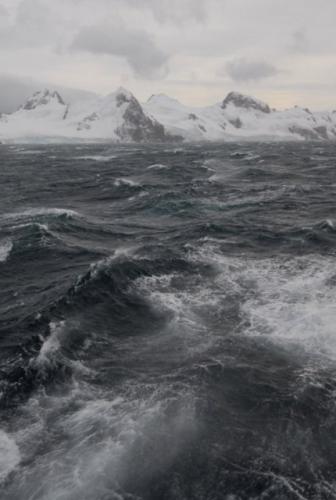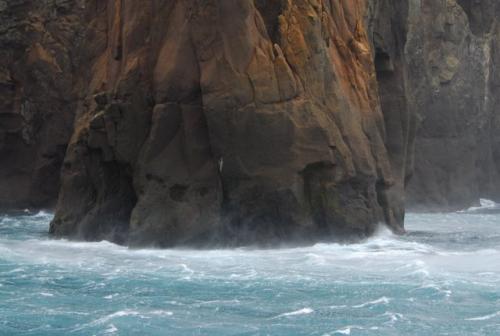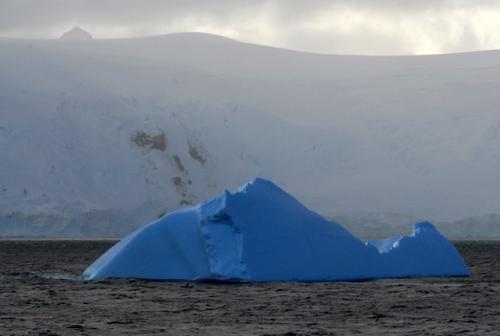Antarctica – Land Ahoy! The South Shetland Islands

Rough Seas in the South Shetland Islands, Antarctica
It is about 20 to 9 in the evening and the sun has just set. It was an eventful day. We arrived in the South Shetlands early this morning, after two rough days at sea crossing the Drake Passage. I enjoyed the trip across the Drake but it was wonderful to see land again.

We had great intentions of getting off the ship and going for a hike on Half Moon Island this morning but alas the winds that greeted us were about 50 knots and so no zodiacs would be taking us to shore today (the ship has a number of rubber zodiacs on board to transfer passengers to shore for expedition stops). Plan B was to move over to another location, Deception Island, about a two hour journey away… but alas that did not work either. We reached the island no problem but the winds continued to howl forcing us to stay on board. Deception Island is the largest of three recently active volcanic centres in the South Shetlands. At Whaler’s Bay there are the remains of a whaling station which operated from 1910 to 1931 and was then abandoned. Happily today there is no whaling in Antarctic waters.

Chinstrap Penguins. Who Says Penguins Can't Fly?

Antarctic Ice

And what better way to end our first full day in Antarctica than with an amazing sunset!
Hello again Mr. Catt:
What fabulous pictures and tales of Antarctica. We have some questions...:)
We were surprised to hear the air temperature was warmer than we thought it would be at this time (around freezing).
We would like to know about the melting and forming of icebergs around this time of year. Can you tell us some more about penguin migration and raising of the chicks at this time of the year. How cold do you think the water was? What was the scariest thing that you experienced on the Antarctic adventure? Also, please let us know some of the effects of global warming on Antarctica. We would also be keen to know what other types of marine life you saw. How far away will a penguin venture from the shore? Sorry for all the questions...we know you are very busy...but we are enjoying the adventure and learning with you!
A million thank you's from all the COASTIES! :)
Hola Coasties,
And thanks so much for your note and list of questions. I am about to add a post which might answer some of your questions... perhaps not all but some.
In terms of you penguin question, I was able to see three species: the Chinstrap, Gentoo and Adelie. I was only able to see the Chinstraps from the ship (there is one photo on the blog of Chinstrap Penguins) but I did get to see the Adelie and Gentoos at their breeding colonies. The length of time they stay on shore, varies by species, as does the distance they will travel. Young Chinstraps and Adelies typically leave the colony at about 7 weeks of age... while the Gentoos spend about twice that length, 14 weeks, before heading out to sea. So... during my visit it was the end of the breeding season and by now, most, if not all of the Gentoos will be out at sea.
I don't have many scarey stories, as I felt safe throughout my journey. It was a fabulous opportunity to see the wildlife and landscapes of one of the most pristine landscapes on the planet.
Please have a read of my new posts (coming up soon) and if there are more questions I have answered please let me know.
I am off to the Ecuadorian Amazon and then the Galapagos so I will not have consistent internet access for the next 2 weeks or so.
I will get as much up on the site today as I can!
Cheerios,
Danny
 Funded by TEK
Funded by TEK
Hey Danny,
I had no idea that the ice bergs could be so vivid in colour. Thanks for the update. Too bad about the rough seas. I suppose nature always puts its agenda first. Great photos, thank you.
Tess